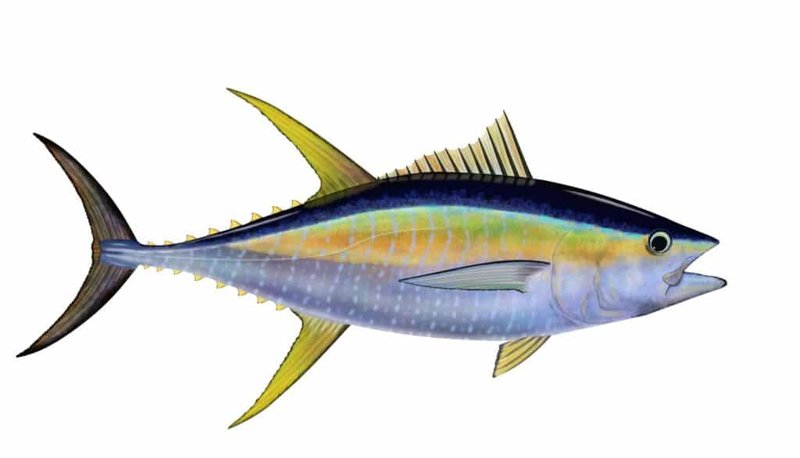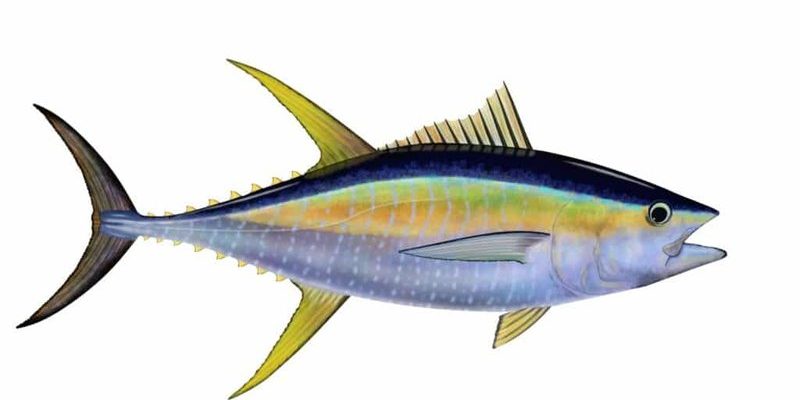
So, why should we care about the yellowfin tuna’s evolution? Well, these fish play a significant role in ocean ecosystems, fisheries, and even economies around the world. Understanding their journey can help us appreciate not only their importance but also the delicate balance of marine life. Plus, it’s a fascinating topic that unveils many layers of complexity, much like peeling an onion. Let’s dive deeper into the evolutionary tale of this incredible fish!
The Origins of Yellowfin Tuna
The yellowfin tuna, scientifically known as *Thunnus albacares*, originated millions of years ago. They belong to the family Scombridae, which includes other tunas and mackerels. To put it simply, these fish have been perfecting their craft of survival for a long time. The earliest ancestors of the yellowfin tuna swam the oceans during the late Cretaceous period, around 75 million years ago. Can you imagine how different the ocean was back then?
During their early years, these fish had more rudimentary features compared to today’s sleek and agile yellowfin. Fast forward millions of years, and these tunas have adapted to become one of the fastest fish in the ocean, reaching speeds of up to 75 miles per hour. They’ve developed streamlined bodies and powerful fins, which help them navigate through various oceanic environments with grace. Their journey teaches us about adaptability — traits that have allowed them to thrive in different conditions and environments.
What’s fascinating is how yellowfin tuna grew to be so significant in marine food webs. Their evolution has made them top predators in their habitats, feeding on smaller fish and squid. This role isn’t just for their survival; it keeps the ocean’s ecosystem in balance. Without them, there would be too many smaller fish, which could disrupt the food chain. So, the next time you enjoy a tuna sandwich, remember that you’re partaking in a story that stretches back millions of years!
Physical Adaptations for Survival
Yellowfin tuna have some pretty impressive physical adaptations that set them apart from other fish. For starters, their streamlined bodies are built for speed. Think of them as the sports cars of the sea. This sleek shape reduces drag, allowing them to travel fast and escape predators effectively.
Additionally, they sport large, powerful tails that they use to propel themselves through the water. Just like a swimmer kicks hard to move quickly, the tuna’s tail does all the heavy lifting. They can swim long distances and dive deep into the ocean, hunting for food or evading threats. Here’s the thing: these adaptations don’t just help them survive; they also make them efficient hunters.
Moreover, their keen eyesight is a crucial survival tool. Yellowfin tuna can see well in various light conditions, which helps them spot prey and avoid predators. This ability to perceive their environment gives them an edge in the vast ocean, making them formidable hunters. Imagine being able to spot a small fish swimming a hundred feet below you — that’s the kind of vision they have!
The Social Behavior of Yellowfin Tuna
You might think that fish are solitary creatures, flitting about on their own. But yellowfin tuna often exhibit fascinating social behaviors. They can be found in schools, which is a group of fish swimming together. This behavior isn’t just for companionship; it helps them hunt more effectively. By working together, they can corner and catch prey, which makes feeding more efficient.
When you picture a school of yellowfin tuna, imagine a swift, synchronized dance as they weave through the water in unison. This teamwork increases their chances of survival and success. Interestingly, scientists have observed that these tunas can even communicate through body language and movements. It’s like they’re having an underwater conversation without making a sound!
A little-known fact is that yellowfin tuna are also known to associate with other species while hunting. For example, they may swim alongside dolphins or even seabirds. This cooperative hunting strategy creates a more significant opportunity for food, highlighting their adaptability and intelligence. The ocean can be a tough place, but yellowfin tuna navigate it with a masterful sense of social dynamics.
Migration Patterns and Habitats
Migration is a crucial part of the yellowfin tuna’s life cycle. These fish are known for their extensive migrations, often covering thousands of miles. They typically migrate to find food, spawn, or escape unfavorable conditions. These journeys can take them across entire ocean basins, showcasing their impressive endurance and navigating skills.
Yellowfin tuna usually inhabit warm waters of the tropical and subtropical regions, but they can also venture into cooler waters during certain seasons. Their adaptability to various habitats has allowed them to thrive in different ocean environments, from surface waters to deeper zones. Picture them as ocean wanderers, always searching for the best spots to feed and reproduce.
During spawning, yellowfin tuna travel to specific areas that provide optimal conditions for their eggs. This strategy ensures that their young have a better chance of survival. Their eggs and larvae develop in warmer waters rich in nutrients, providing a perfect nursery for the next generation of tunas. It’s a beautiful example of nature’s planning—ensuring that their legacy continues.
The Role of Yellowfin Tuna in Marine Ecosystems
Yellowfin tuna have a vital role in maintaining the health of marine ecosystems. As apex predators, they help keep the population of smaller fish in check. This balance is essential for the overall health of the ocean. When yellowfin tuna thrive, it signals that the ecosystem is functioning well. Conversely, if their numbers decline, it can lead to overpopulation of smaller fish, which can disrupt the whole system.
Moreover, yellowfin tuna are a food source for larger predators, like sharks and larger fish species. In this way, they contribute to the food web. Think of them as a key ingredient in the ocean’s recipe for a balanced ecosystem. Their presence is crucial for the survival of many other marine species.
Additionally, yellowfin tuna significantly impact local economies. They are highly sought after for both commercial and recreational fishing. The demand for tuna has led to the development of fisheries around the world, providing livelihoods for many. But here’s the thing: overfishing has become a concern, impacting their populations. Sustainable fishing practices are essential to ensure that these remarkable fish continue to thrive for future generations.
Conservation Efforts for Yellowfin Tuna
Given their importance in marine ecosystems and economies, conservation efforts for yellowfin tuna have gained traction in recent years. Various organizations and governments are working to promote sustainable fishing practices and reduce bycatch. These initiatives aim to protect yellowfin tuna populations from declining further due to overfishing.
One way to support yellowfin tuna conservation is through responsible seafood choices. When purchasing fish, look for labels that indicate sustainable practices. Supporting fisheries that prioritize conservation helps ensure these fish can continue their evolutionary journey.
Efforts also include establishing marine protected areas (MPAs) where fishing is restricted or prohibited. These sanctuaries provide a safe haven for yellowfin tuna and allow populations to recover. It’s like giving these fish a break from the pressures of fishing, allowing them to thrive in a safer environment.
In conclusion, the evolutionary journey of the yellowfin tuna is a remarkable tale of adaptation and resilience. From their ancient origins to their current status as top ocean predators, these fish embody the intricate dynamics of marine ecosystems. Understanding their evolution helps us appreciate their significance and the need for conservation efforts. By learning more about yellowfin tuna, we can play a role in their continued survival and ensure that future generations will marvel at these magnificent creatures of the sea.

